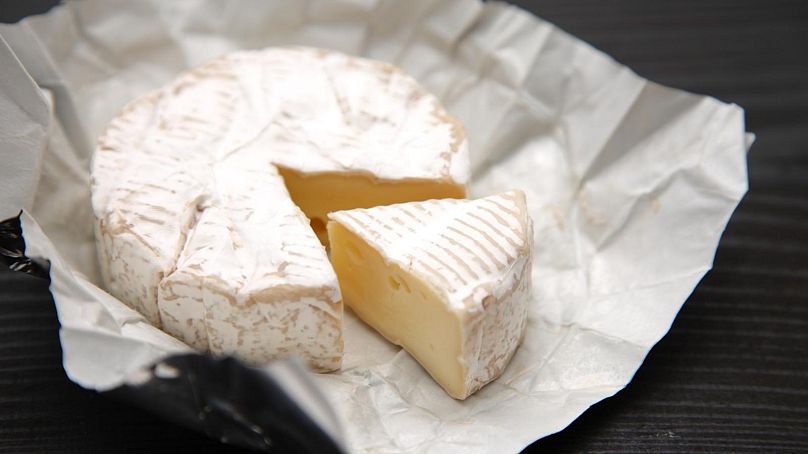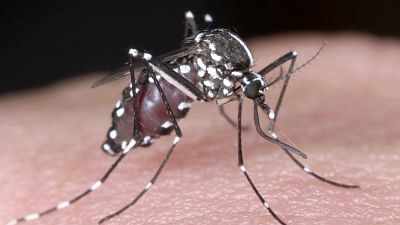A dream come true for cheese lovers: eating Jarlsberg may actually help stop bones getting weaker without raising your cholesterol.
Eating small amounts of a particular Norwegian cheese may actually help stop bones getting weaker without boosting cholesterol, a new study has found.
Researchers from Norway have found that eating a daily portion (around 57 g) of Jarlsberg could help stave off bone thinning without boosting harmful low density cholesterol, and that the health benefits are unique to this very particular cheese.
Jarlsberg is a mild and semi-soft, nutty flavoured cheese made from cow’s milk, with regular holes. The cheese originates from a town of the same name in eastern Norway.
The Norwegian team hopes that the cheese may help stop osteoporosis and even prevent diabetes, but further research is necessary.
Previous research suggested that it may help boost levels of osteocalcin – a hormone associated with strong bones and teeth – but that it was not clear if this effect is specific to Jarlsberg or any type of cheese.
Jarlsberg vs Camembert
In a bid to find out, the academics studied 66 healthy women who either ate a daily portion of Jarlsberg or 50g of Camembert cheese every day for six weeks.
Both cheese have similar fat and protein levels, but Jarlsberg is rich in vitamin K2 – also known as menaquinone – unlike Camembert.
One form of menaquinone is found in animal products such as liver, while others come from bacteria and fermented foods such as cheese.
At the end of the six-week period, the group consuming Camembert was allowed to eat on Jarlsberg for another six weeks.
All the participants were healthy women with an average age of 33 and an average weight.
Every six weeks, blood samples were taken from all the participants to check for important proteins, osteocalcin, and a peptide (PINP) which helps bones renew themselves and stay young.
The samples showed key signs of bones renewing themselves and of vitamin K2 having increased after six weeks among people who ate a serving of Jarlsberg cheese daily, whereas for those who ate Camembert, PINP levels stayed the same while other indicators of bone health fell slightly.
However, levels of both PINP and the chemical and biological indicators rose significantly after these participants switched to Jarlsberg.
Blood fats increased slightly in both groups, but cholesterol levels fell significantly in people once they made the switch from Camembert to Jarlsberg.
The amount of glucose in red blood cells fell by three per cent in people who ate Jarlsberg but rose by two per cent in people who ate Camembert. Once the Camembert group switched to Jarlsberg, the glucose levels fell again.
Calcium and magnesium levels fell in the group who ate Jarlsberg but remained unchanged in the group who ate Camembert.
After switching cheese, calcium levels dropped in this group too, possibly reflecting increased uptake of these key minerals in bone formation, according to the researchers.
The bacteria in the cheese also produces a substance called DNHA which earlier studies have suggested could reduce bone thinning and increase bone tissue formation.
This could explain the rise in osteocalcin, researchers say.
Positive effects of superfood Jarlsberg
"Daily Jarlsberg cheese consumption has a positive effect on osteocalcin, other markers of bone turnover, glycated haemoglobin and lipids," the report reads, concluding that the effects are indeed specific to this cheese.
The findings further suggest that Jarlsberg cheese might therefore help to prevent osteopenia – the stage before osteoporosis – as well as metabolic diseases, such as diabetes, although further research would be needed to confirm this.
"This study shows that while calcium and vitamin D are known to be extremely important for bone health, there are other key factors at play, such as vitamin K2, which is perhaps not as well known," said Professor Sumantra Ray, Executive Director for the NNEdPro Global Centre for Nutrition and Health, which co-owns the BMJ Nutrition Prevention & Health journal in which the study was published.
"Different methods of preparation mean there are key differences in the nutrient composition of cheese which has often been regarded as a homogenous food item in dietary research to date. This needs to be addressed in future studies".
"As this is a small study in young and healthy people designed to explore novel pathways linking diet and bone health, the results need to be interpreted with great caution as the study participants will not necessarily be representative of other groups. And it shouldn’t be taken as a recommendation to eat a particular type of cheese," Ray cautioned.




